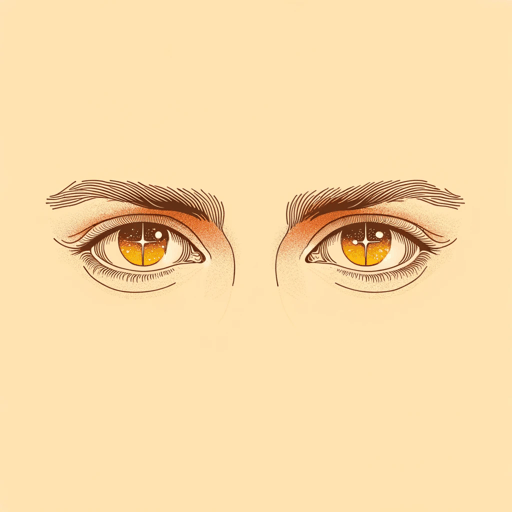28 pages • 56 minutes read
Ray BradburyThe Pedestrian: A Fantasy in One Act
Fiction | Short Story | Adult | Published in 1951A modern alternative to SparkNotes and CliffsNotes, SuperSummary offers high-quality Study Guides with detailed chapter summaries and analysis of major themes, characters, and more.
Summary and Study Guide
Summary: “The Pedestrian”
“The Pedestrian” is a dystopian science fiction short story by Ray Bradbury that deals with themes of The Pressure to Conform to Social Norms, The Dangers of Technological Advancement, and The Horrors of Government Control. and explores the loss of creative thought. These are common topics in Bradbury’s work. First published in the magazine The Reporter on August 7, 1951, “The Pedestrian” follows Leonard Mead, a man who is arrested for taking a nighttime walk in a deserted futuristic city in which walking for enjoyment is unprecedented. This guide refers to the edition of the story that appears in Bradbury’s 1953 anthology The Golden Apples of the Sun.
The story is set in 2053 on a cold, misty evening in an unnamed city that is home to three million people. During the day, the city’s streets are packed with noisy cars, but at night, the streets are empty because everyone is inside their air-conditioned homes watching television, called “viewing screens.”
Told in third-person perspective, the story begins with poetic descriptions of what Mead sees and does as he goes about his routine of taking long walks at night through the silent city.
Hands in his pockets, Mead chooses a direction and begins walking. He sees the glow of television screens through windows and notices the shadows of people moving around their homes. To avoid drawing the attention of dogs, which had previously barked at and chased him when he startled them with his footsteps, Mead now wears sneakers instead of shoes with hard soles.
Referencing times and channels, Mead ponders what kinds of formulaic, lowbrow entertainments people are watching in their homes: Westerns with cowboys and heroic cavalry soldiers, shows about murders, quiz or review programs, and a slapstick comedy featuring a performer falling off the stage.
As Mead trips on a piece of broken sidewalk, he reflects that he has walked thousands of miles over the course of 10 years but has never met another person walking in the city. He turns around and walks back toward his home. When he is just a block away from his house, a police car shines a light on him and orders him to stand still.
The police car has a metallic voice. Near the end of the story, the author reveals there is no one in the car, implying that it is a robot or operated by an artificial intelligence.
As the police car orders Mead to put up his hands, threatening to shoot him if he does not comply, Mead reflects that this is the only police car in the huge city. He mentions that the previous year was an election year and that the number of police was cut from three to one since crime had dropped so low.
At this point, the police car begins to interrogate Mead, asking him his name and profession. He says he is a writer, and the car notes that he has “no profession.” Mead acknowledges that he hasn’t written in years, since people spend their time staring blankly at television screens instead of reading books or magazines.
As the car asks more questions, Mead reveals that he has an air-conditioned home but no viewing screen. He also admits that he is not married. When the car asks Mead why he is walking, Mead says he has been walking every night for years and that he does it for air, to look around, and just because he wants to walk. At that point, the police car orders Mead to get into the jail cell it houses.
Disoriented, Mead argues, but the police car insists. This is when the author reveals there is no one in the car, and the reader realizes it must be some sort of robot. Mead is not surprised, which suggests the use of artificial intelligence as law enforcement may be common in his society. Mead observes the hard jail cell in the empty police car, and the car notes that it would have helped if Mead had a wife to give him an alibi, but he does not. When Mead asks where he is being taken, the car responds that he is going to “the Psychiatric Center for Research on Regressive Tendencies” (22).
Mead gets into the jail cell and is driven past his house, which shines brightly on the darkened street because it is the only one with electric lights on. Mead says it is his house, but no one answers. The story ends with a description of Mead being driven away and the streets being left empty once again.
Related Titles
By Ray Bradbury

A Graveyard for Lunatics
Ray Bradbury

All Summer In A Day
Ray Bradbury

A Sound Of Thunder
Ray Bradbury

Dandelion Wine
Ray Bradbury

Dark They Were, and Golden Eyed
Ray Bradbury

Death is a Lonely Business
Ray Bradbury

Fahrenheit 451
Ray Bradbury

Marionettes, Inc.
Ray Bradbury

Selected from Dark They Were, and Golden-Eyed
Ray Bradbury

Something Wicked This Way Comes
Ray Bradbury

The Illustrated Man
Ray Bradbury

The Martian Chronicles
Ray Bradbury

The Other Foot
Ray Bradbury

There Will Come Soft Rains
Ray Bradbury

The Toynbee Convector
Ray Bradbury

The Veldt
Ray Bradbury

Zero Hour
Ray Bradbury

